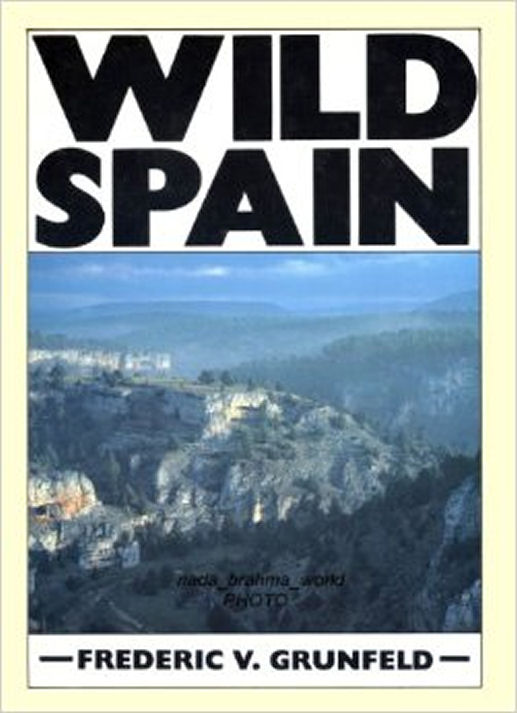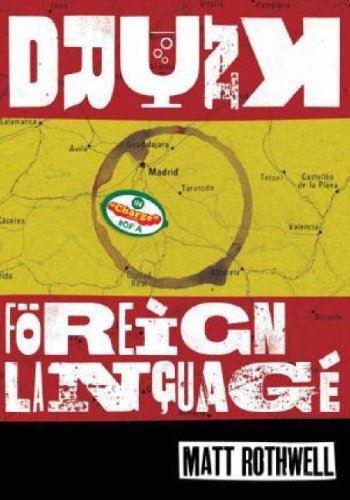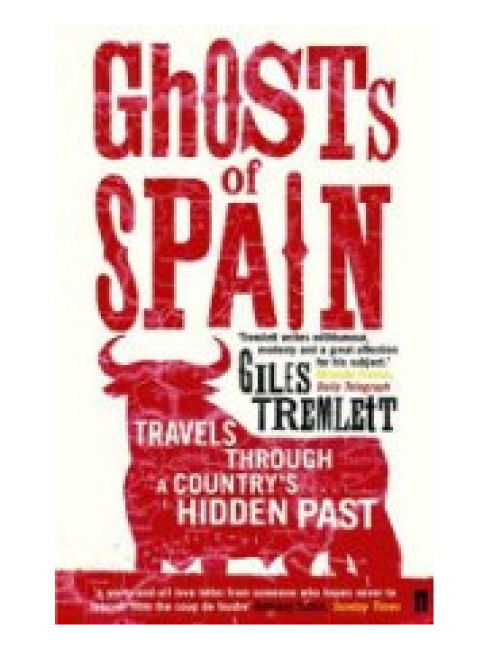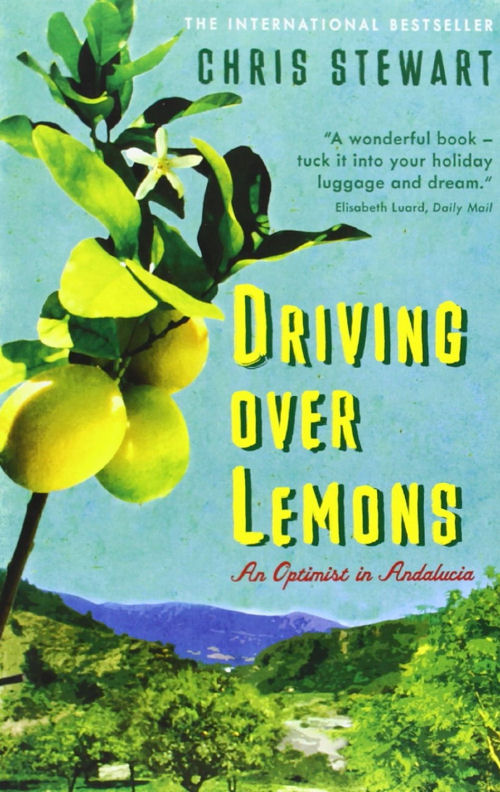Tails Of The Alpujarras
Friday, July 3, 2015
Tails Of The Alpujarras
 This book saves lives. Tails of the Alpujarras is an anthology of animal related stories featuring some of the most well known and popular authors such as Chris Stewart, Victoria Twead, Valerie Collins, Ann Patras, Sandra Piddock, Jeff Jones and many more. This book saves lives. Tails of the Alpujarras is an anthology of animal related stories featuring some of the most well known and popular authors such as Chris Stewart, Victoria Twead, Valerie Collins, Ann Patras, Sandra Piddock, Jeff Jones and many more.
The Alpujarra region of Southern Spain has been badly hit by the Euro crisis and unemployment of over 40% has meant some real hardship. A sad consequence of this is the huge amount of household pets, especially dogs, being abandoned as their owners either move to seek work, cheaper housing or just find they can no longer support that extra mouth. These poor bewildered animals are being left to fend for themselves, a function for which they are simply not equipped. Many die on the streets or are gathered into pounds which because of the sheer quantity have often become nothing more than kill stations.
Valle Verde is an animal rescue centre in the Alpujarras and is bravely saving what animals they can. They rescue them, find foster homes, arrange neutering, chipping and vaccinations then try to find ‘Forever Homes’ for these once-loved pets. Often they are sent far afield to Germany, Holland or the UK. But they are desperately short of funds and receive no government help.
Tails Of The Alpujarras is an anthology where a group of well respected writers, bloggers and broadcasters along with many other passionate individuals have joined forces to publish this book to be sold to raise funds. The publishers, Mirador Publishing, are kindly donating all the profits, the authors gave their work for free and even the cover was created especially by well known artist Alison Charlotte Moore.
Now, a disclosure of interest! I was partly instrumental in bringing this wonderful anthology to fruition and I am very proud to have a story included. The stories range from fantasy to fact, heartbreaking to heart warming or often just humorous anecdotes. I could write pages about the credits of these authors but I think the names speak for themselves. What I think is most remarkable about this book is that all these high profile individuals rallied to the call of these distressed animal and sacrificed time, effort and money to help.
So, please buy this book and help an animal find a home. Please buy a copy for a friend, blog about it, facebook or whatever else. Help make this book famous and make a real difference to these abandoned pets.
Tails of the Alpujarras is available as a paperback form Amazon or any bookshop and as ebook in most formats. All profits are going straight to the Valle Verde Rescue Centre.
More about the book here and links to buy www.luddington.com/tails
 0
Like
Published at 11:48 AM Comments (0)
0
Like
Published at 11:48 AM Comments (0)
Rick Stein's Spain
Friday, December 5, 2014
Rick Stein’s Spain

A change of pace this time. Whilst gathering material for this book and the accompanying television programme, Rick visited the area in which I live therefore I felt it appropriate to have a look at this book. The purpose of Rick’s trip to the Alpujarras was probably more of a publicity opportunity to be filmed with local author Chris Stewart rather than a genuine search for new recipes. Chris’s version of the encounter in his own recent book, Last Days of the Bus Club, is quite hilarious.
Recipe books are an interesting category as on the face of it they are supposed to be instruction manuals for the construction of a meal but in reality that is very rarely the reason for which they are purchased. Most cookbooks are bought as gifts so therefore the aesthetic value is of prime importance. Even for people that purchase them for themselves it’s a sad fact that people end up just looking at the pictures with a vague thought that it might be nice to try one or two of the recipes one day. Despite our hunger for cookbooks when cooking for ourselves we prefer to stick to traditional classics like Spaghetti Bolognese, Roasts or Bangers & Mash.
While celebrity cookbooks constantly gather at the top of the bestseller lists it must be very frustrating to those highly talented authors who find their latest novel has just been ousted by a book that will probably never be read! And when Jamie Oliver is Britain’s second biggest-selling author since records began and the Hairy Bikers knock E.L James off the number one slot, that indeed is an interesting cultural statement.
So, I approach this with a slight sense of the irony of writing a review about a book which, whilst topping the bestseller charts, may well be read by fewer people than read the blogs on Eye On Spain.
If one looks at cookbooks in a wider context than just a collection of recipes then many of them are fascinating social statements and Rick Stein’s Spain fulfils that role perfectly. Seeing the cultural differences of the Spanish people across the regions through the dishes presented here is a fascinating journey. Spain is a gastronomically divided country where regions are prepared to go to war over the correct ingredients for a paella. Or should one call it Spanish Rice?
Sadly, Spanish cuisine is often neglected in favour of France & Italy. My personal preference is certainly the food of Spain as I find it simpler and somehow more honest than the overdressed creations of French haute cuisine or the painted plates of nouvelle cuisine. So, whilst I am confident that the author has a true interest in Spanish food he does let his preferences for all things French show from time to time. In fact, in the recipe Mussels in vinaigrette he actually uses the French word for gherkin which is cornichon instead of the Spanish pepinillo.
As a coffee table book this is a pleasing volume. Lots of arty pictures of food and Spanish scenery break up the text. However many of the pictures are irrelevant to the recipes with artistic images of clam shells that would look more at home hanging on a bathroom wall than gracing a recipe book. It does seem as if somebody has simply raided Getty Images stock photo vaults rather than create new and relevant artwork.
The recipes themselves are as varied as the regions they represent and are very well presented. For those living in Spain this is certainly a collection to be sampled although if one lives in the suburbs of Milton Keynes obtaining many of the ingredients might prove problematical. Pulpo a la Feria is a nice simple recipe to try, no complicated cooking skills required. Easy, if only you can locate an octopus of the right size in your local Tesco’s fish counter!
Rick’s love of fresh fish shows through and as Spain cooks the finest fish dishes in the world this is where the book comes to life. Simple, robust dishes, full of flavour and embracing the passion of the people who created them. Neither does he neglect the huge Moorish influences on Spanish cuisine with delicious recipes of lamb, meatballs and garlic, although I will be avoiding the offal. The beauty of this collection is the simplicity of the recipes. Most are easily created by a culinary philistine like me!
If one reads this book as a mini travelogue interspersed with recipes representing the regions then it becomes an altogether more satisfying read. His insights are sharp and his eye for the unusual makes for some fascinating vignettes on Spanish life and culture.
For a light hearted view of Spain, its culture and food then this is to be recommended. For a coffee table book it falls short due to its overuse of stock location photos.
 0
Like
Published at 10:23 AM Comments (0)
0
Like
Published at 10:23 AM Comments (0)
Tales of The Alhambra
Friday, November 21, 2014
Tales of The Alhambra

For most visitors to Andalucía the highlight is a trip to Granada and a visit to the Alhambra Palace. There cannot be many visitors who have not availed themselves of the use of the handheld audio commentary devices that go with the tour. It is through this commentary that I first heard the words of Washington Irving describing the architecture, history and legends of the Alhambra as we toured the grounds and which prompted me to buy the book.
Published in 1832 and from the man famous for giving the world Rip Van Winkle and Sleepy Hollow, Tales Of The Alhambra seems like a strange shift of literary direction. Until that is, one realises that this is also the same author who wrote arguably the definitive biography of Columbus and the controversial Conquest of Granada detailing the lives and wars of the Catholic Monarchs, Ferdinand and Isabella.
Irving also had a great influence on other writers of his day and personally encouraged Herman Melville, Longfellow and Edgar Allan Poe in their careers.
Following up on an invitation from an acquaintance to go and stay in Madrid, Irving seized the opportunity to find fresh material for his voracious writing habits. It was while he was there that he researched and wrote his biography of Christopher Columbus.
During his travels he discovered Granada and fell in love with the rich history surrounding the region.
Struck by the beauty of the city and its palace, Irving asked the Governor for access in order to produce a ‘Sketchbook’. Contrary to Irving’s account, the Alhambra was neither abandoned nor derelict at the time he arrived. Although not in a good condition, it was however undergoing what repairs could be afforded and many of the rooms were actually inhabited. The Governor, recognising Irving’s fame, felt it would do no harm to the cause of his palace and granted access. Irving later took up residence inside to write his book.
In his writing Irving clearly reflects the mood of the period with its over romanticisation of all things Eastern or Oriental to the point of almost deifying the Moors who built the palace. What started out as a sketchbook quickly drifted into a mixture of sketches, history, myth and pure fantasy culminating in the not insignificant volume it is today. For an author who carved his fame with fantasy tales then transitioned to in-depth biographies of the likes of Columbus and Mohamed it is not surprising that this book comes together as a combination of myth and narrations of real historical events.
For me, Irving clearly demonstrates the workings of an author’s mind as he describes what he is physically seeing then interpolates and dives into the stories behind the detail, whether real or imaginary. The way one can look at a good painting and imagine the events behind the scene. This is certainly one of the tools I use as a fiction writer, to look at a scene in front of me and wonder at the background. How did these people come to be here at this time and what did they do previously or next? It’s interesting for me to see this device presented within narrative and shows great confidence in his standing to be able to risk this melding of fact, supposition and pure fantasy.
As we explore the palace through the pages we have a feeling of being in the company of a good friend with an eye for detail and a repertoire of entertaining anecdotes. He details the history with the accuracy of a great biographer then embellishes it with folklore he picked up from the local people. Sometimes the edges blur as he portrays the palace as being held in some sort of superstitious reverence by the locals. Both local legend and the Moorish traditions tell of the king who built it as being a great magician. It is even believed that he sold himself to the devil, and set the whole fortress under a magic spell. This is posited as the reason it has remained standing for several centuries.
Indeed, so blurred are these edges between fantasy, history or superstition that at one point Irving even warns, ‘If anything in these legends should shock the faith of the over-scrupulous reader, he must remember the nature of the place, and make due allowances. He must not expect here the same laws of probability that govern commonplace scenes and everyday life; he must remember that he treads the halls of an enchanted palace, and that all is haunted ground.’
Despite Irving’s obvious love of the Spanish people and the country, it is clear he holds in higher regard the architects and original inhabitants than the locals of his day. And once even describing the locals as "gay Andalucíans dancing away the summer nights" while he loiters the halls of this great and cultured pile. He shows his clear sympathies towards Boabdil, the last Emir of Granada, when he was thrown from his beloved palace and forced into exile after the conquest by Ferdinand and Isabella. Whose own mother chided him, ‘You do well to weep as a woman over what you could not defend as a man.’
Shortly after writing this book Irving served as the U.S. ambassador to Spain. He later claimed the success of his book led to the restoration work at the palace however as noted, that was well under way at the time he arrived although it is likely his fame helped secure the longer term funding.
What is certain though is that he is largely responsible for the romanticised image of Andalucía that persisted for the next century and probably lingers to this day.
 0
Like
Published at 3:14 PM Comments (1)
0
Like
Published at 3:14 PM Comments (1)
For Whom The Bell Tolls
Friday, November 14, 2014
For Whom The Bell Tolls
 One of the Great Books of the 20th century and certainly Hemmingway’s zenith. Following the author’s experiences in WW1 he clearly felt a need to explore the themes of heroism and self sacrifice. The background he chose was his beloved Spain where he spent much of his time during his journalistic days. One of the Great Books of the 20th century and certainly Hemmingway’s zenith. Following the author’s experiences in WW1 he clearly felt a need to explore the themes of heroism and self sacrifice. The background he chose was his beloved Spain where he spent much of his time during his journalistic days.
The background to the book is probably one of the most confusing wars of the 20th century, The Spanish Civil War. Hemmingway carves a path through the politics and approaches the story in a necessary but somewhat simplistic view of evil fascists and heroic republicans.
Robert Jordan is a hero in waiting and when the cause presents itself he wastes no time in heading to Spain to support the loyalist struggle. Hemmingway paints Jordan as a mortal hero, one who recognises his own shortcomings and mortality, a theme Hemmingway often visits in his central characters.
The main thrust of the book covers a period of only three days, although much is also told in flashback. During this time he is reluctantly accepted by a group of guerrilla fighters, meets and falls in love with Maria and is trained to blow up a bridge in order to delay the fascist advance. The dynamics within the small group are beautifully explored and within three days we see the loyalties shift and in the end it is the strong woman, Pilar who emerges as the leader. An interesting piece of writing in what appears to be very patriarchal community within, what is always assumed to be, a highly patriarchal country. Jordan shows a willingness to change as his natural scepticism as he is challenged by the intuitiveness of the females within the group and even begins to believe that some of the signs he sees may indeed be portents. This is highlighted by the final scene in the book where the bracketing of the narrative by his description of the pine forest at both the opening and closing scenes of the book is a remarkable piece of writing.
For anybody who wants to understand the Spanish Civil War, For Whom The Bell Tolls is probably not a bad starting place as ultimately this war was about passions and ideals rather than territories and Hemmingway brings this to life beautifully. Hemmingway’s writing style was unusual at the time and some readers still struggle with it. His dialogue is concise and the lack of floweriness reflects his journalistic background. For me, this makes it a fast paced and enjoyable read but others may find it a bit terse.
 0
Like
Published at 2:18 PM Comments (7)
0
Like
Published at 2:18 PM Comments (7)
Twilight Visitor
Thursday, October 30, 2014
Twilight Visitor
 My choice this time is a slight cheat. It’s actually set in Afife which is technically in Portugal, albeit by only twenty miles. But my blog, my rules! My choice this time is a slight cheat. It’s actually set in Afife which is technically in Portugal, albeit by only twenty miles. But my blog, my rules!
Twilight Visitor is a strange book. It’s a bit science fiction, a bit political thriller and a fair bit philosophical. This caught my eye as it’s a recent release by Reál Laplaine, a thriller writer of some note who has recently been receiving a lot of good press. The main thread of the book is a conversation which takes place on the beach at Afife, a huge and usually fairly deserted sandy stretch on the northerly borders of Portugal and Spain. Whilst the conversation is taking place, the last great conflict is about to be enacted in the middle east. China is squaring up to Iran over oil and the world edges relentlessly towards nuclear war.
On the beach at Afife, a lonely and disillusioned man meets a beautiful and enigmatic woman. She introduces herself as Serena and together they drink wine and talk. A parallel story follows the main players involved in the rapidly approaching world holocaust as they attempt to prevent the headlong rush towards Armageddon . The juxtaposition between the two narratives is handled skillfully and in lesser hands could well have resulted in an unintelligible mess. Laplaine’s mastery of the two plot lines is quite extraordinary as he balances the pastoral and tranquil setting of the beach scenes with a high concept thriller that is comparable with the best of Dan Brown or Jack Higgins.
Through the conversations we learn that the visitor Serena is much more than she appears and it gradually becomes apparent she’s not even human. Her target, this lonely and disillusioned man on a deserted beach unknowingly holds the key to preventing the seemingly inevitable nuclear war. She has to convince him that a fragment of knowledge he holds can move the world back from the brink of total annihilation. But time is running out and the man is skeptical.
The settings that Reál Laplaine has chosen are perfect. We move from the beautiful scenery of the Atlantic coastal village to the war room of the Pentagon and the deserts of Iran with ease. Whilst the Super Powers seem incapable of pulling the situation back from the edge, conversations take place in a small bar in a tiny Portuguese village that may well turn the course of this rapidly escalating conflict.
Laplaine’s view of world politics is both challenging and thought provoking as he explores the nature of corporate interest on developing nations. He clearly knows his subject and his ideas on the way technology could be better utilised for the good of the indigenous populations rather than the blind pursuit of profit make for interesting reading.
Twilight Visitor is a highly unusual book and probably its stumbling point will be its refusal to conform to genre. The thriller reader may be put off by the long pastoral scenes and the science fiction reader may be disappointed by the enigmatic nature of the alien who is not about to send in a fleet of battle cruisers to save the day. But for those who are willing to try something a bit different this a very rewarding book.
Twilight Visitor by Reál Laplaine is published by Netherworld Books
 0
Like
Published at 5:14 PM Comments (1)
0
Like
Published at 5:14 PM Comments (1)
Wild Spain
Friday, October 24, 2014
 It came as a great surprise to me when I discovered the distinct lack of books about the wildlife of Spain. It came as a great surprise to me when I discovered the distinct lack of books about the wildlife of Spain.
For such a huge and diverse country which ranges from the snowy peaks of the Sierra Nevada to the lush forests of Catalonia or the arid desert of Almeria one would think the sheer variety of wildlife alone would give rise to a whole library of books on the subject.
Search Amazon for books about wildlife in Britain and one is presented with over 2,000 titles yet try the same thing with Spain and apart from a handful of bird watching books, probably aimed at the visiting British twitcher, there is very little. A few out of print nature books or a handful of general guidebooks to Spain but nothing which really covers the wildlife in any depth.
Some years ago I managed to obtain an out of print copy of Wild Spain and if one wants a good view of Spanish wildlife this is certainly a book to hunt down. Note, there are actually two books titled Wild Spain by different authors, I have them both but the one I am currently reviewing is the hardest of the two to find by Frederic V Grunfeld.
Although this version was published in 1988 much is still as relevant today as the day it was printed. The roads he describes are now more developed and there is a wider choice of places to stay but of course the landscapes and wildlife remain pretty much unchanged.
The book is set out in a highly accessible and organised manner. The landscape of Spain is diverse in both its wildlife and its geology and refuses to conform to the neat lines of the autonomous regions so Grunfeld largely ignores these artificial divisions, preferring instead to divide it into nine geologically defined sectors including the Balearics and Canary islands.
The first thing one notices about this book is the remarkable quantity and depth of information provided. This is definitely not a travelogue with whimsical descriptions of little white villages or tasty tapas, This is a neatly structured informational resource of quite extraordinary detail.
Each of his chosen geographical sections are further divided into a dozen smaller regions, although again with little regard to human demarcation lines which are subject to the vagaries of politics.
In each area he describes, he gives the nearest airports and public transport. He explains how to reach each place by road, rail and bus. He then goes on to list all the names and numbers of the maps which cover the area and provides a useful selection of guidebooks for further reading. He also give a selection of places to stay although sadly, many of these places no longer exist.
And in case one takes the impression this is just a dry, dense fact book consider this evocative description, “What really struck me as I sat looking down on this incredible landscape, was the sound of the swift’s wings ripping through the air close to my head, the noise strangely mirrored by the rasping of the scythes as the local people harvested their wheat and barley in the valley below.” Grunfeld has mastered the difficult task of blending a huge amount of factual data with flashes of poetic beauty.
His descriptions of each area include an in depth discussion of the flora and fauna, the climate, landscape and scenery, He points out places that one should visit including many still very remote and untouched locations.
The photographs that pepper the text are, with a few exceptions, mostly informative rather than artistic. There are also a good number of sketches of the local wildlife and some clear maps on how to locate each place.
All in all, this is quite an extraordinary work with a staggering amount of information. It’s such a shame this marvellous book is currently out of print and very difficult to locate as there are no current publications that comes anywhere close to this. Unfortunately the author died just as this book was published.
Publisher: Ebury Press
ISBN-13: 978-0852236932
 0
Like
Published at 8:48 AM Comments (3)
0
Like
Published at 8:48 AM Comments (3)
Drunk in Charge of a Foreign Language
Friday, October 17, 2014

A more light-hearted offering this time and a book which made me laugh out loud many times. Matt Rothwell’s book is a comic travelogue of his extended camping trip around Spain. His love of the country and the people clearly shows through and is a welcome change from the plethora of tales of travellers who just seem to want to moan about the country and its people.
He recounts with great fun and a warm, self effacing humour, his encounters with the locals and fellow travellers alike. His descriptions of the places he visits are clear and vivid but he maintains balance and never becomes lost unnecessary detail. For all its length, both as a journey and the book, it still seems like a whirlwind tour as his travels take him to many places just off the usual tourist maps.
Much of the humour arises from Matt’s encounters with the locals where they are always portrayed in a warm, positive way and neatly avoids the usual travelogue clichés of stereotyped foreigners. A running gag throughout the book is his struggle to find a bank who will deal with his particularly obscure type of traveller’s cheques. Here again, we are shown his self effacing style as the cause of his difficulties is never presented as the fault of uncooperative locals but clearly as the advisor who persuaded him to carry that brand of cheques.
More good natured humour comes from his struggles to learn the language and the many mistakes made, often with unexpected consequences. We share his frustrations as his neatly constructed itinerary is constantly disrupted by weather or a desire for the comfort of a hotel as opposed to planned campsites.
The book presents an unexpected twist at one point when his wife suddenly announces she wants a divorce halfway round the tour and heads for home. Matt is faced with a dilemma but in true explorer spirit he is not going to let this turn disrupt his careful planning and sets out to continue his travels alone. The touch of pathos that shows through the following chapters is lifted by his incorrigible sense of humour as his determination to see through his mission continues in true British style.
Overall a very funny and well written book that clearly shows Matt’s love of Spain and its people. Well recommended.
Drunk in Charge of a Foreign Language (The Diary of a Spanish Misadventure). Published by Ametralladora 2007.
 0
Like
Published at 8:47 AM Comments (0)
0
Like
Published at 8:47 AM Comments (0)
The Ghosts of Spain
Friday, October 10, 2014
The Ghosts of Spain is a somewhat personalised view of Spain. However the personalisation comes in this case not from the Author but from the people of Spain themselves. Giles Tremlett manages an empathetic view as to how this country is seen through the eyes of its populace.
 Tremlett is the Madrid correspondent for the Guardian and has lived there for around twenty five years. His knowledge of the country is enviable and his ability to relate this in a readable form is to be admired. This book achieves the perfect balance of sufficient detail to inform but stops short of an educational tract. This should not be seen as a history of Spain but more as a view of the impact of this history on a nation. Ultimately he is a story teller and he has written a book which is easily digestible and leaves the reader to pursue further studies if they wish. Tremlett is the Madrid correspondent for the Guardian and has lived there for around twenty five years. His knowledge of the country is enviable and his ability to relate this in a readable form is to be admired. This book achieves the perfect balance of sufficient detail to inform but stops short of an educational tract. This should not be seen as a history of Spain but more as a view of the impact of this history on a nation. Ultimately he is a story teller and he has written a book which is easily digestible and leaves the reader to pursue further studies if they wish.
In the early parts of the book Giles shows how the civil war which killed 500,000 people, more than the number of British deaths in WW2, is almost a hidden war. This tragedy still lies buried just below the surface and by some tacit understanding, it remains there. The author shows his journalistic frustrations at this silence but in the end he seems to understand the necessity of avoiding the opening of still fresh wounds to this now progressive nation. To me this code of silence is akin to that of an old married couple who have agreed to never mention the ‘Big Affair’. The country has managed to avoid pointless recriminations and is probably the reason for Spain’s ability to move forwards and its rapid transition to modern democracy.
The thrust of this book is to show how the history and politics of a country still impacts on its culture today. As a Brit, I understand instinctively how events like 1066, The World Wars, the IRA bombings or our royal family still impact on our day-to-day life but it is impossible to convey this succinctly to somebody from outside the U.K. In this, Giles does an admirable job and presents a hundred years of cultural influence quickly and in a readily understood way.
The more recent history of the Basque and Catalan problems is concise and seemingly well balanced but are presented to inform the lay reader and not intended as a deep political treatise.
His coverage of the recent scandals concerning the construction boom is incisive and accurate. He manages to show how the confusion and petty corruption led to much wider problems which ended, as we all know, in major corruption and the crash and stagnation of the building sector which is still crippling the country’s recovery.
I found the section on the Flamenco particularly eye-opening. It is not an art form I’ve ever found personally attractive so I guess I’ve only ever seen the usual simplistic versions. Giles brings us the darker side of this and shows it as a sort of street music, more akin to the gangster-rap of today than the pretty folk dancing with which it often associated. He exposes the ghettos that gave it life and the dark underbelly that is still tangled in poverty, gypsies and drug abuse. It’s a remarkable insight.
The book is highly readable, as one would expect from a journalist, yet it still manages to cover its subjects in surprising depth. However, there is one notable exception and that is The Corrida. The bullfight is still a huge part of the Spanish culture and psyche that it seems odd he passes it by with just a few brief mentions. Whilst I personally find it horrendous and cruel I do recognise its importance to huge parts of Spain. It seems odd that Giles feels comfortable to poke at the open sores of the civil war yet avoid this subject with such deftness. Perhaps either he, or his publishers, saw it as too divisive and potentially damaging to sales?
Giles shows us Spain as a wonderful dichotomy. On the one hand it is still emerging from the dark, secretive and oppressive fascism of Franco, yet on the other hand it is one of the most progressive nations in the world. The strong Catholicism contrasts with the openness and willingness to accept different lifestyle choices. It is the first country in the world to allow gay police officers to cohabit and its attitudes to prostitution, naturism, and other alternative lifestyles are truly inspiring.
For people looking for a good introduction to Spain that runs much deeper than the usual guidebooks this is essential reading. It is a very good and concise exploration of modern Spain and how it became the country it is today.
 1
Like
Published at 11:05 AM Comments (6)
1
Like
Published at 11:05 AM Comments (6)
Driving Over Lemons
Monday, October 6, 2014
For my first Books On Spain review there can really only be one contender and that’s Chris Stewart’s wonderful autobiography, Driving Over Lemons. Living in the same area as Chris it’s lovely to see through his eyes this region as it was when he arrived here twenty five years ago. Much has changed in that time but much hasn’t.
 The book is beautifully written in the way only the English can manage, a lyrical and understated style that’s filled with gentle humour. Chris is an eternal and self confessed optimist and to him the glass is never half empty or half full, it’s always full. He tackles living in this harsh and demanding environment with a belief that no problem is insurmountable and any setback is just a minor deviation to his plans. The walls of his house tumble down, the roof leaks and the insects invade but Chris just goes to work and the small farm just seems to respond to his touch and thrive. His willingness to integrate with the local community is a lesson to all those who wish to settle in any foreign country. His acceptance of the customs and ways of the region builds strong and enduring friendships that are still evident even in his latest book, Last Days of the Bus Club. The book is beautifully written in the way only the English can manage, a lyrical and understated style that’s filled with gentle humour. Chris is an eternal and self confessed optimist and to him the glass is never half empty or half full, it’s always full. He tackles living in this harsh and demanding environment with a belief that no problem is insurmountable and any setback is just a minor deviation to his plans. The walls of his house tumble down, the roof leaks and the insects invade but Chris just goes to work and the small farm just seems to respond to his touch and thrive. His willingness to integrate with the local community is a lesson to all those who wish to settle in any foreign country. His acceptance of the customs and ways of the region builds strong and enduring friendships that are still evident even in his latest book, Last Days of the Bus Club.
For those who have just arrived from Mars, Chris Stewart was the original Drummer with the Prog Rock band Genesis. He left them just before they became famous and toured the world working on farms or wherever he could find a job until he eventually settled in Spain in 1988. Driving Over Lemons relates the early days of his new life in the Alpujarran region of Andalucía. The book is written with such a warm charm that seems to make carving a living from this rough terrain somehow fun. So much so, that he has been credited, or accused depending on one’s viewpoint, of single handedly starting a mass expat migration to the area. Many of whom, lacking Stewart’s tenacity and optimism headed home just as rapidly. It is a credit to his writing skills that Chris can make a tumble down shack with no electricity or running water an aspirational dream but this is exactly what he does.
Christ Stewart has since written three follow on books relating his later years at El Valero.
 0
Like
Published at 8:33 AM Comments (5)
0
Like
Published at 8:33 AM Comments (5)
Spam post or Abuse? Please let us know
|
|